This report covers:
- Oil (s)
- The point
- Silicone oil
- Why silicone?
- Whiscombe Honey
- Grease
- White Lithium grease
- Tacky grease (s)
- Tune in a Tube
- Graphite
- Molybdenum Disulfide
- And the beat goes on
Today we look at lubricants as part of the tools we use. Reader hihihi said this:
“I think liquids can be considered, if not tools, then at least essential. For example, degreasers like white spirit, alcohol or acetone. And, of course, there are the various lubricants, like oils and greases.
In a way, at least until they’re set’n’dry, the various glues are liquid too. Oh yeah, thread-lock.
The list goes on…
Finally, some thin disposable gloves. I admit to thinking they’re just for those too lazy to wash, but now that I’ve “seen the light” they are a must for me.
Oh, and maybe a beer (non-alcoholic, of course ! [wonder what that’s like? 🙂 ], for consolation when things go wrong, and celebration if they don’t. 🙂”
Well, it seems that he said more than just lubricants. He included all liquids. I’ve decided not to go that far in this report. Just lubricants will be more than enough. This is a Friday report, and this should give you guys lots to talk about over the weekend.
Oil (s)
We’ll start with oil. Quick — what’s BB’s number one answer to what kind of oil should be used to seal a CO2 cartridge? Crosman Pellgunoil, of course. Is that the only thing that will work? Of course not. It’s just the safest thing for BB to say. Why? Because if I say 30-weight non-detergent motor oil, someone in Tunisia will ask why detergent in the oil is so bad and then someone in Seoul, South Korea will say they use laundry detergent on their CO2 cartridges and by the time Bubba in Truth or Consequences, New Mexico, gets ahold of it, BB will be recommending using Dawn dishwashing soap on CO2 cartridges and oil-fouled baby ducks! Pellgunoil, Pellgunoil, Pellgunoil!
“But BB, I thought oil was a lubricant.” It is, of course. So BB recommends 3-in-One oil for light lubrication, and then a reader in Bangladesh asks if his can of Flying A Quality Household Oil is good enough.
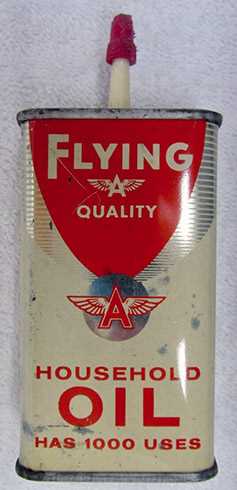
Household oil.
Yeah guys — household oil is household oil. Always has been. It lubricates things like squeaky door hinges and the base block pivots of breakbarrel spring rifles. It doesn’t matter what name is on the container — household oil is household oil. What you are looking for is light lubrication. Not heavy — light. So how light is light? Well, BB didn’t say to use watch oil, did he?
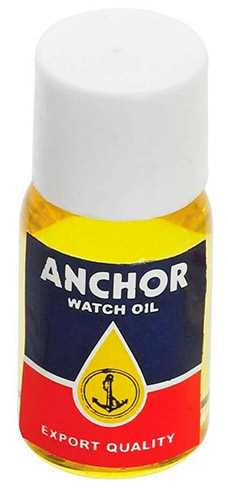
Watch oil is thinner than household oil. It is for lubricating the pivot bearings of wristwatches and pocket watches.
BB also didn’t say to use sewing machine oil. Yes, there are oils made for lubricating the mechanisms of sewing machines. Ask your wife. Use household oil on her Bernina and you just might slow her down. Use watch oil and the bearings will burn up.
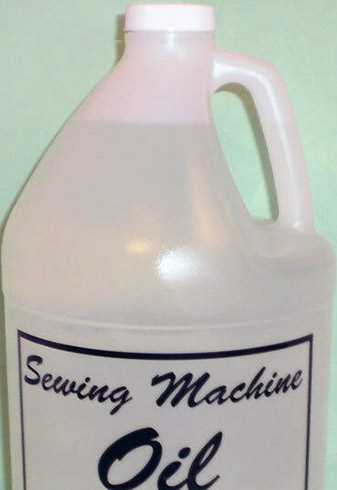
Have a business with 20 industrial sewing machines? You can buy sewing machine oil in gallon bottles.
The point
The point is, there are many different kinds of oils on the market and old BB doesn’t always know which specific one is right. So he recommends a general type, in the hopes that his readers will understand and look for similar products in their local markets. If I say gun oil, everybody gets in a huff over what’s the best one. If I say RemOil, nobody seems to care. They all seem to understand.
I haven’t used real Crosman Pellgunoil for thirty years. I buy a similar product from Dennis Quackenbush that he formulates and sells. It’s a lot cheaper and I use so much of the stuff that price matters.
Silicone oil
Some silicone oils lubricate and others do not — or at least not very well. And if petroleum-based oils are complex — silicone oils give new meaning to the word. There are silicone oils for many specific purposes!
![]()
A spray can of silicone lubricant solves many problems around the house.
Why silicone?
Use silicone because it’s waterproof — or at least water resistant. Around the house you can find many uses for silicone. Around airguns? Not so many. Two stand out. Lubricate the piston seal of a spring-piston airgun with silicone chamber oil. It doesn’t lubricate; it helps seal the compression chamber and it doesn’t explode like petroleum oil. Lubricate the inside of a precharged pneumatic airgun with high-temperature silicone oil because it isn’t as prone to explode under heat (from compression) and pressure.
Another property of silicone products is they can be applied to a wide variety of materials. Not just metal but rubber, plastics, wood and other materials. Sometimes you have to be careful not to use petroleum-based lubes on these materials.
Can silicone oils be used to lubricate the other working mechanisms on airguns? Of course. I’m fairly certain that there is a silicone lubricant for nearly every airgun application. Heck, a few years ago we used thick white silicone grease to stop the twang of a steel mainspring. We called it Mainspring Dampening Compound because Beeman marketed it as such, but what it really was, was food-grade silicone grease that’s used to lubricate the gears of food machinery like meat slicers. Today we have even better products that are not silicone based and I’ll get to them, but silicone can be used for almost all lubrication needs. The problem is, petroleum-based oils and greases have become so entrenched in the firearm and airgun world that we just don’t know enough about silicone lubricants to safely make exchanges.
![]()
Silicone o-ring-lube.
Whiscombe Honey
Many years ago Ben Taylor, the Ben of Theoben, told me about an oil mixture he used to lubricate pellets for his gas spring rifles. He got it from John Whiscombe. I don’t remember if he called it Whiscombe Honey or I did but it is a 2 to 1 mixture of Hopes Lube oil (regular gun oil) and STP car oil treatment. He said it would lightly lube the pellets and not detonate in his airguns.
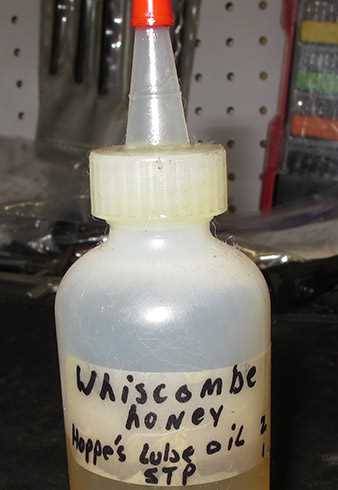
Whiscombe Honey.
Grease
If you think oil is a complex subject please return your seatbacks and tray tables to their upright and stowed position — we are about to encounter bumpy weather! Greases are generally soaps emulsified (mixed) with mineral or vegetable oils. They have an initial high viscosity that drops under shear pressure to give the effect of an oil-lubricated bearing of the same viscosity as the base oil in the grease.
Huh?
Greases stuck together until force thins them out, at which time they act like oil. They are used where plain oil would not remain in place.
There are too many kinds of grease to cover them all, so I’ll limit this discussion to the greases airgunners might use.
White Lithium grease
White Lithium grease is both water and heat resistant which means it protects metal from corrosion and
rusting and can function in extreme temperatures up to 150oC. White lithium grease demonstrates excellent adhesion to metal and is perfect for lubricating metal-on-metal surfaces. For many years it was the number one grease used by hobbyists for airgun work.
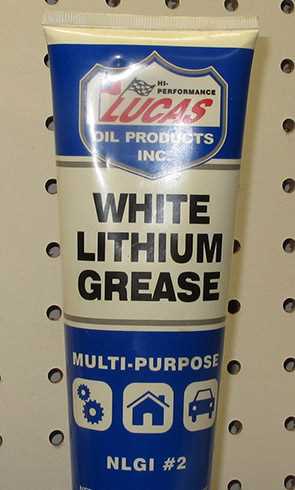
White Lithium grease.
Is there a non-white Lithium grease — a plain Lithium grease? Yes. White Lithium grease has zinc oxide added to enhance its load-bearing properties.
I could go on but to get through all we have to cover I’m leaving White Lithium grease and moving on.
Tacky grease (s)
When Ivan Hancock sent me his Mag 80 Laza kit for the Beeman R1, the mainspring was evenly coated with a semi-hard black substance that I called black tar. The airgun community quickly applied that name to a class of greases known as open gear lubricants. They are the greases that are used on drawbridge mechanisms. These are extremely tacky greases that arrest the superfluous movements of coiled mainsprings to dampen the vibration. Jim Maccari sold and I believe still sells black tar — a version of this thick tacky grease for spring gun tuners. And I have already mentioned Mainspring Dampening Compound from Beeman. What’s left?
Tune in a Tube
About 5 years ago when Gene Salvino still worked for Pyramyd AIR he told me about a red grease called Almagard 3752. He told me he was using it to quiet the mainsprings on FWB 124s and that it didn’t rob much velocity — something the other tacky greases do. I didn’t follow up on what Gene said at the time, but years later I tried Tune in a Tube and discovered just how great it is! This stuff is fantastic, and it isn’t the only red grease that works.
For a whole lot less money if you are buying a whole container there is Red “N” Tacky grease. I haven’t tested it thoroughly but the one time I used it, it worked just like TIAT. Other readers have said that they use it for the same purpose and it does work well.
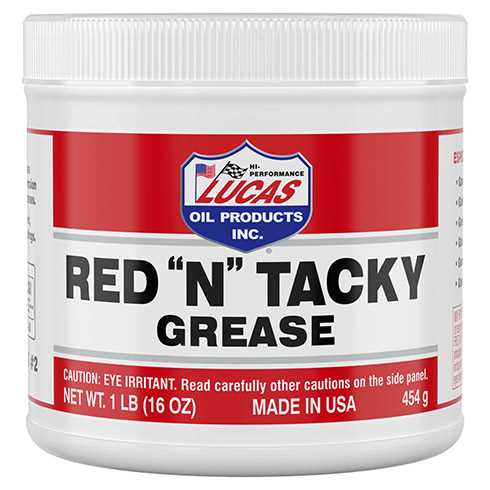
Red N Tacky grease seems to be similar to Almagard 3752.
Graphite
I could cover graphite which is not a grease but a solid that’s suspended in a grease, solvent or oil vehicle. But graphite isn’t that great, now that we know about Molybdenum Disulfide.
Molybdenum Disulfide
Molybdenum Disulfide or moly as we know it is a solid particle that bonds with metal to form a super slick surface. It doesn’t wear off or dry out like greases. But airgunners are more familiar with it when it is mixed in with a thick grease. Pyramyd AIR sells it as Metal-to-Metal Paste. We call it Moly Grease.
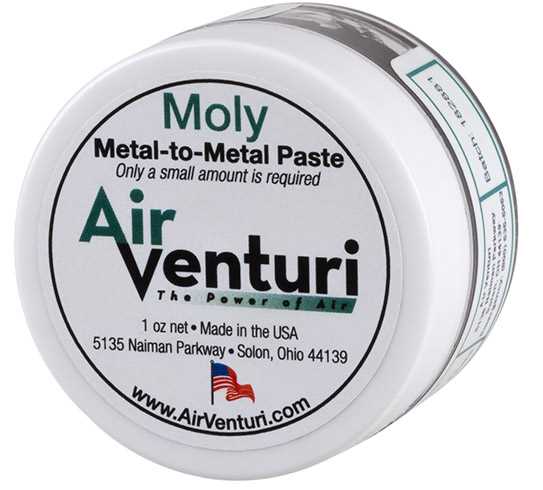
Air Venturi Metal-to-Metal Paste.
But here is the deal. If you have moly particles you can mix this stuff up at home!
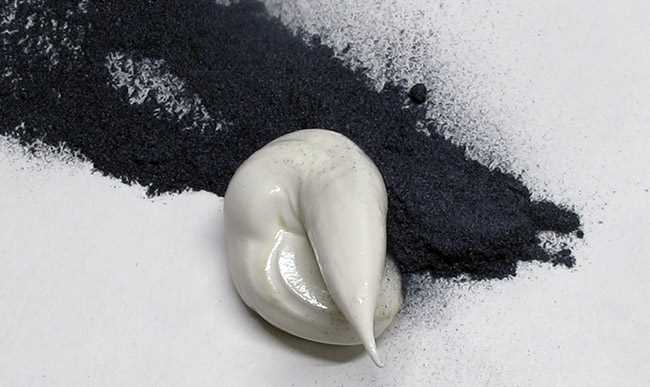
Want thinner moly grease? Mix it yourself. A dollop of White Lithium grease and a puff of moly particles and then…
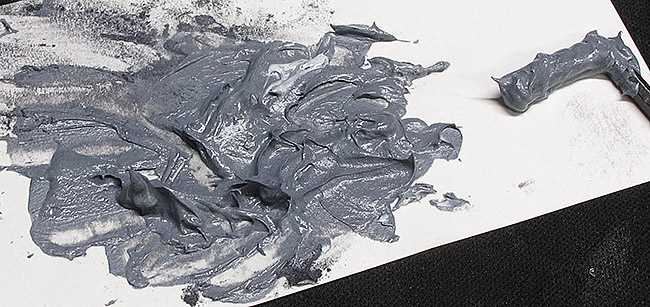
… mix together thoroughly.
And the beat goes on
Is there more? There is always more. I have undoubtedly skipped past the most important lubricants, and I’ve given you all weekend to hash it out! Let me get you started — Ballistol!

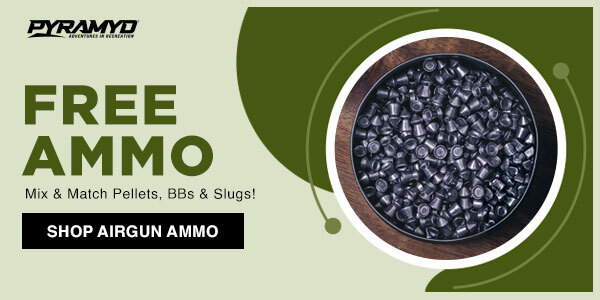

B.B.
Surprised you did not mention Krytox. Supposed to be the bees knees when it comes to not being temperature sensitive. I want it in my next spinger!
-Y
B.B.
While I don’t use it as a lubricant, one of the absolutely most useful things I’ve read about here on your blog, highly recommended by you as a preservative, is Ballistol…I use it EVERY DAY…because I shoot one or more airguns every day, and that’s what I use to wipe them down when I am done. Thank you so much! That stuff is amazing. 🙂
Take care & God bless,
dave
I’ve switched from using Ballistol to Eezox After wiping down guns with Ballistol I’ve had light surface rust appear on guns within a couple months stored in cases. Even had mold form on stocks. After switching to Eezox I could store guns for months with no oxidation or mold whatsoever. Just my observation maybe diff in another climate.
Glenn S
Where do you get Eezox?
I get rust to with Ballistol. Love the stuff though…
-Y
“Where do you get Eezox?”
Yes, glenn37us, as is Yogi, I am curious about this stuff; thank you.
Yogi
Amazon.
Ed
Yogi,
EEZOX Contains a power cleaning solvent, Trichloroethylene. Some cautions are found in the FAQ, and the SDS. – Don
https://www.eezox.com/faq
https://static1.squarespace.com/static/5959a1f886e6c0de955700a3/t/5a57f4300d92975070df1a56/1515713585171/EEZOX-SDS.pdf
Ballistol MSDS:
https://www.ballistol.com/wp-content/uploads/2013/09/MSDS_TECH_BIO.pdf
Ok since we are talking tools and lubricant as tools. How about how to clean up lubricants. What “tool”/cleaner do you use to clean off the lubricants from your gun? Example: cleaning old lubes off a spring gun spring and so on.
Personally, I like 91% isopropyl alcohol. Mineral spirits will work. So will carb cleaner.
RR
Hmmm, you ever use 91% isopropyl alcohol to clean bores of new airguns?
Deck
LOL! It has been so long since I have bought a “new” airgun, I do not remember!
Seriously though, I usually pull a patch soaked in Ballistol through the barrel slowly and then pull several clean, dry ones through.
GF1.
I have an email where you asked me about acetone, but I cannot find it anywhere.
Acetone is pretty nasty stuff. Carb cleaner and mineral spirits are not that great. I can usually clean any kind of gunk off of an air rifle with alcohol. It might take a little longer, but it works and does not seem to bother any seals.
Recently, I think I found another use for alcohol. I will have to do a write up about it and let you guys work it over a bit.
RR
A new use for alcohol. And what might that be.
B.B.,
An excellent report. Well done.
I’ve long had a small bottle of watch oil I bought to use in typewriters. Machines with tight tolerances, such as watches and typewriters, require very light oils, and usually care must be taken not to use too much or oil too often. Most typewriter hunters with a recent resale shop find discover tons of gunk clogging up the works, a sign that over the years it was over-lubricated. Sluggish key action on a manual typewriter is usually because of too much oil.
Michael
Michael,
Typewriters are something about which I know very little. But I do know they gunk up, and your lubrication explanation seems quite logical.
BB
B.B.,
Typewriters really should be put away in their case or covered whenever they are not going to be used again that day. Dust can get in literally hundreds of gaps (each key has four around it) and at the platen opening, etc. That dust hits any lubricant and instantly becomes MUNG. But typewriters have dozens if not hundreds of mechanical joints that are mated with tight tolerances, and it is still metal against metal, usually without bearings. So some lube is necessary.
Therefore lubricant should be a very high grade oil and exceptionally thin. Finally, it should be applied sparingly, just like lubricating a Feinwerkbau.
When I get a typewriter (collectors are only interested in manuals and usually portables) it always has a sluggish action and even sticking keys.
Here’s my procedure: first, I remove the chassis from the cowling and put the chassis on a thick, old bath towel. As there are natural rubber parts all over the place, I am careful with solvents. Second, I drench the whole thing with alcohol from a spray bottle, usually Everclear because it is non-toxic. I do this at least four times. The drips take a lot of dust, congealed oil and dried ink down to the towel. Then I work the action and apply lighter fluid to specific joints that are still sticky and sluggish. Finally, if anything is really dry, I apply a tiny amount of watch oil, but I try to do as little of that as possible. Finally I use alcohol and a sharp toothpick to clear dried ink out of all the slugs (the letters) so they will print sharply.
When I’m done, barring something being broken (which is actually kinda rare), I can get them as snappy as when they were new. I have bought machines I already had in my collection for $3 – $8 and then, after tuning them up, having a typewriter that will sell for $300 or more. Not bad for a couple hours of work!
Michael
I use Hoppe’s #9 Gun and Reel Silicone Cloth to wipe down the entire exterior of all guns with wood stocks or grips. As advertised, it really does remove finger prints and coat surfaces with a protective and lustre finish. There are other brands but the Hoppes wipes last much longer when kept sealed in their zip bags. I also keep Ballistol soaked cloth in zip lock bags which I use for the same purpose. The zip lock bags seal the odor inside. While I like the smell of Ballistol my boss may differ if our bedroom gets permeated with it. Either one works as well as the other. Both do wonders on wood stocks. Ballistol spray prevents rust on the metal legs of my shooting table which stays outside in all kinds of weather.
Deck
B.B., speaking of oils, I also have a small bottle of key/lock oil. And in my bathroom is a small bottle of electric razor oil. Both of those look/feel like household oil. But, who knows.
With low power bb guns (think low power daisy springer type) , I have put reg. engine in them (as a kid) and never had problems. Even s0, now that I’m older, I only use 30w or 20w non detergent or Pelgun oil in the bb guns.
With silicon oils, one has to be careful. I’ve read on blogs about people using the cheap spray brand x of silicon in PCP and break barrel guns. Those aren’t the same type as the think oil you can get. Seems some even say flammable on them. I have pure silicon that I have for RC car shocks. That is think silicon for sure.
Also in my younger years, I had some multi pump guns that leaked bad. I found I could use my Dad’s STP Oil Treatment and they would hold air longer (leak less) than plain oil. It made them very hard to pump though.
Doc
Doc
I have a bottle of oil that came with my razor and it says it’s mineral oil. As far as I know, mineral oil is “Baby Oil” without the fragrance of a clean baby.
I use a dab of silicone grease (used inside SCUBA masks, I think) to lube my pellet probe o-rings and fill probe o-rings. Don’t know if it’s the best product, but it’s what I use.
Half
Half,
That silicon grease is great stuff. Divers use it to lubricate valves and seals on high pressure tanks. It is also used on HPA hand pumps. It is a fantastic o ring lubricant.
There’s a guy on YouTube that tests stuff…all kinds of stuff. He’s really quite inventive and thorough. He tested several CLP’s including Ballistol and found that Clenzoil was the best (https://www.youtube.com/watch?v=fibRewlndLg). I prefer the smell of Ballistol over Clenzoil, but the engineer in me goes for function over pretty smell. I’ve switched over to Clenzoil…
Motorman
St. Louis, MO
I have used regular mineral oil bought from the pharmacy to lube my Beeman P17, Daisy 901 and Benjamin Sheridan 397, without problems, since I do not have Pellgun oil here in Costa Rica. It also works to protect metal surfaces from rust, Ballistol is made mostly from mineral oil as well.
3 in 1 Oil, Think about it. Cleans, Lubes and Protects. That’s all I ever used on my Daisy 1894 springer. It flowed freely around all the moving parts and in that all important little hole in the top that said ‘OIL’. And there is no forgetting the smell of Hoppe’s No 9 for real steel. We have come a long way in lubricants.
Shootski and GF1, Catching up on an earlier blog about horsepower. I used to think it was king too until it gets dangerous.. I’m sure you both know that the entire drive line needs to be improved as well. But the fun usually ends when you let off the gas pedal.
If the speedometer only goes up to 120 you could be in trouble in other ways as well. The car simply was not built for it.
When I got a factory car with a 180 MPH spedo I moved into an entirely new world of driving excitement that continued for the entire time I was driving, Not just while on the gas pedal. And it was safe at any speed ! Think exotic ! Wish I did it a long time ago.
Bob M
Bob M,
ABSOLUTELY!
Both of my current rides are shod with Winter and Summer tires in sets of four that are typically Z+ rated. The summer tires are streetable SLICKS; currently I’m on the Potenzas.
My suspensions are upgraded from the almost racetrack ready stock suspensions as well as the very short drivetrains on these front drive and transverse engined torque monsters. Most importantly the brake system is totally race ready from HT brake fluid to cross slotted oversized disks.
shootski
Shootski,
So you are actually building an exotic car, Way to go !
When you finish adding Magnetic Adjustable Damping Struts, replace all the rubber and suspension parts with Heim Joints, add automatic speed controlled front air dam and rear spoiler, antiskid, twin turbos, selectable exhaust system, touring or sport, four wheel drive and four wheel steering, You will know what I’m talking about. Retractable head lights for better aerodynamics? The tires are good. I have all weather Michelin Pilot Sport ZR’s.
All kidding aside it’s a 92 Twin Turbo AWD Mitsubishi 3000GT VR4. Think I mentioned it before. I purchased the Bob Bondurant High Performance Driving book to take advantage of it but the AWD, non skid and four wheel steering complicated things. Too advanced.
Bob M.
Bob
It can be dangerous at any time.
And yes as hp increases other improvements will need made.
I have a good size tube of Lucas Red ‘n’ Tacky, a small bottle of Ballitstol, a couple of small bottles of pure silicon oil and a small container of silicon grease. I’m good.
Most of the old gals around here at RidgeRunner’s Home For Wayward Airguns have leather piston seals. Over the years I have heard a lot about how they should be soaked with a light oil. I like to use silicon oil for that. The leather seems to like it an it reduces dieseling.
I use Ballistol, kept in a small spray bottle to wipe down after handling my shiny guns. A great product.
A couple of pointers – most of us use WD40 in various ways. It displaces water, and is thus water soluble. It’s more of a solvent than a lubricant – but it is important to shake your can of WD-40, as it separates quickly. I believe that’s why it sometimes gets bad test results. I find it useful, but not very protective.
Although it is not primarily a lubricant, Renaissance wax is a great product for protecting both wood and metal surfaces. A small container lasts a long time.
JerryC,
Renaissance Wax. YES!
Just make certain that the surface has been restored and cleaned immaculately before wax application. This is NOT a 3-in-1 type of product; it is used by museums to protect all manner of items after restoration for conservation.
shootski
JerryC
Received Vessel 6 bit screw driver via EBay.. I only wish I had these many years ago. What a difference compared to Phillips screw drivers I own. There is no side to side movement. Thanks to you and BB for the tip.
Deck
A little late to the party, but this product may be useful more so if you shoot air guns in a harsher environment such as near salt water. My fishing friends swear by it in terms of keeping nuts, bolts and screws corrosion-free. Tef Gel also seems to help keep screws from rotating out of place though not a substitute for Loc-Tite; have used it on my HW95 and it does seem to keep the usual suspect screws that loosen up tighter, longer. Caveat: FM is no expert on lubricants and/or pretty much anything else.
https://www.practical-sailor.com/systems-propulsion/tef-gel-vs-lanocote
Would good ol’ military spec rifle grease work well enough to “quiet down” springs compared to say, TIAT or Almagard?
FawltyManuel,
In my humble opinion no. Because the military spec grease is designed primarily as a lubricant while Almagard and it’s ilk are formulated to dampen vibrations primarily.
Siraniko
Someone once told me that 3-In-1 oil eats seals in older airguns….think 1950’s and 1960’s Crosman and Benjamin CO2 and multi-pump pneumatic. Anyone have any experience with this?
Motorman
St. Louis, MO
Thoughts on my new Crosman 362
Well my fellow airgunners, I did use some lubricant (Crosman Pellgun oil) on my latest addition, a Crosman 362, and the rifle picked up an additional 10 fps, on average. I know the manual says to use “2 to 8 pumps” but I just had to try it with one; here’s my results:
1 pump = 256 fps (2 fpe)
2 pumps = 374 fps (4.4 fpe)
3 pumps = 456 fps (6.6 fpe)
4 pumps = 519 fps (8.5 fpe)
5 pumps = 556 fps (9.8 fpe)
6 pumps = 599 fps, but 610 fps after lube (11.8 fpe)
7 pumps = 629 fps (12.5 fpe)
8 pumps = 644 fps, but 655 after lube (13.6 fpe)
This was using 14.3-grain Crosman Premier pellets. And once I got the rifle sighted in a bit, a shot a 3/4″ group at 15 yards; I’m sure I can do better once I get used to the gun, and use some Swiss files to thin down that front sight; currently, it is .095″ wide; by comparison, the front sight on my Sheridan is .070″ wide…that’s where this one needs to be, in my opinion.
However, how did Crosman do overall? Quite well, I would say. I sighted the gun in at 6 pumps; that gives 11.8 fpe of energy, which has served well to harvest all manner of small game across the pond. Six pumps seemed to be the sweet spot for me; it produces the same power level I’ve used in my Sheridan for years, but it is much easier to pump to that level. Also, sighted it at 6 pumps, for varmints and such, it also happens to shoot flat enough that it makes a super-handy plinker with just 4 pumps. And actually, even at 4 pumps, it has more energy than my HW30S or my 1322 pistol.
As is, right from the bow, with no upgrades, I would call this a great plinker and hunter; it’s good to go for small game (with head shots) up to 15 yards (and I’ve killed dozens of squirrels within that range with my Sheridan), and farther if you slim down the front sight a bit (which costs nothing, just a bit of time and patience).
Overall, I am extremely happy with this rifle; it will be a garage-gun, truck-gun, and walking-the-pond-gun. I may upgrade it someday, but for now, I’m quite happy with it in factory form (except I will thin down the front sight).
Crosman has a real winner with this model 362! It’s nice and light and just begs to be shot off-hand. It’s the best $100 gun I’ve seen in a long time; I really like it! 🙂
Blessings and happy shooting to all,
dave
Oh wait, I forgot to add one caveat. My old friend, RidgeRunner, did note that this gun might be too light for hunting small game such as squirrels. However, you have to bear in mind that he lives in an area populated with the super-tough mountain-squirrels. If you live in such an area, you might want to use something more powerful, or better yet, just steer clear of these ruffians! LOL 🙂
Dave
Or shoot at a closer distance.
Yep 🙂
I’ll be out at my shooting bench and they will gather above me, chatter and throw acorns at me. Mean buggas.
Seems FM may be having to get himself one for controlling the iguana invasion around here – though the .177 Max has been doing a fine job there, soon to be joined by the .22 at the next opportunity. Hope you and Mrs. are feeling better.
FM.
We are feeling much better, thanks.
I wish I could take the time to come down there and help you with that iguana problem.
“…they will gather above me, chatter and throw acorns at me. Mean buggas.”
RR, I guess I wasn’t exaggerating too much about how tough they are, LOL! 🙂
Iggys just run for their lives. Glad to know you and Mrs. are ok, RR. You all are welcome to an iguana shoot down here anytime. They’ve been scarce. Seems the neighborhood sniper teams have been doing a good job.
Dave
My 362 has been tallying right along side my Hw35e with pest kills our to 50 yards.
Both nice solid accurate air guns.
Gunfun1, that’s awesome! I need to shoot the 362 some more, but I am liking her already. 🙂
guns.
Keep shooting that 362. I’m pretty sure you will continue to be happy with it.
And of course keep the updates coming. The way I see it is the 362 is the modern day 760 but improved. Every household should have one.
“Every household should have one.”
Amen! 🙂
Actually, all kidding aside, I think RidgeRunner made a great move in restoring a Crosman 101; I tried to talk that old gal into abandoning RRHFWA and heading on down to TDHFWA, but she wasn’t having any of it; he treats his airguns well, and they are loyal to him. 🙂
Hence, I will have to make do with my Crosman 362, and as Gunfun1 pointed out, they can be quite accurate. I did do the front sight mod; I thinned the front post down to just under .070″ and also made it more of a flat-topped tapered post…it has worked out very well. Sadly, the front sight on my gun came to me twisted about 15 degrees to the left (as you sight down the barrel). Hence, even with the rear sight moved as far to the left as it would go, the gun still shot to the right. So I took off the rear sight, and used a round Swiss file to open the adjustment notch to that I could move the sight farther to the left…not bad, but still insufficient. That required that I break out “the big gun,” which in this case is the heat gun I use to bend PVC. With the receiver of the 362 wrapped in a towel and chocked in a vise, I heated the front sight and then used a pair of vise grips to grab the body (not the blade!) and twist it to the right. The first time was not good enough; but on the second try I set the heat on “high” and gave her a really good twist. By the luck of the draw, it came out perfect! At 15 yards, this gun can take down half-inch tinfoil balls with dull regularity (from a rest =>).
So, it took a bit of tweaking, but I think that’s to be expected for a mass-produced $100 rifle. I am thoroughly pleased with the gun, and I think Crosman has a real winner on their hands.
Kudos to you, Crosman! 🙂
Dave
You had to use heat to move the front sight on your 362. They are gluing them now or are they that tight of a fit.
Yes, this one was pretty tight. LOL! 🙂
As I mentioned to shootski, it might have gotten jammed on canted, so that the flat spot on the barrel and the corresponding spot inside the sight were not aligned; that could have made for a tight fit. Anyway, the heat softened it enough so that I could twist it in place (to where it should have been); once cooled, it is also still tight, but it’s where it belongs, so that is OK. 🙂
Dave
Yep as long as it works. That’s what matters. 🙂
thedavemyster,
WOW! It looks like the standard front sight on many Crosman products! I used a wood block and a rawhide hammer to tap them off with just light blows while turning the barrels to keep them moving off evenly. Hope they aren’t gluing them on.
You might want to look at one of the 2300S muzzle breaks (PN 2300-121) that have screw in front sight posts (PN 2300-028 and other suffix numbers) of varying length and diameters.
But for sure enjoy shooting your 362 often!
shootski
Yes, I know that they should tap right off; and there should be a flat spot on the barrel to align the front sight so that it sits properly oriented. It could be that my sight got installed canted, and that’s why it was on so tight. Anyway, I knew it had to be twisted to the right, and I knew the heat gun would soften it enough to let it move, and that once it cooled, it would be firm in its new placement. As I said, I may do upgrades later, but for now, I just wanted to see what one could do with the stock gun from the factory; and so far, I am impressed with it. 🙂
Because I know so little about them, I’m very glad about the lubricants article. Thanks!
Sometimes the brandname product is difficult to get, but knowing what it consists of or how it works, allows us readers outside of the U.S.A. to search for an equivalent alternative.
My personal challenge is rust.
After use, I wipe down the airgun with an oily rag and put it away. Then, after some weeks (or longer), when I get it back out again, I notice rust. So the oil film must have evaporated, exposing the metal to humid air.
Recently I managed to acquire some of the much recommended “Ballistol”. I have been wiping down my airguns with it. But boy, does it smell !
Anyway, I read, in some comments above, how Ballistol didn’t prevent rust after all.
Oh dear, it feels like I’m back at square one… 🙂
hihihi,
Since switching over to Ballistol (after B.B.’s recommendation), I have not had any issues with rust. However, I must add that my guns are never stored in cases, they are either standing in the gun cabinet or hanging on the wall. Additionally, airguns, after they are shot, get a wipe down with Ballistol; hence, they get wiped down often as they all get shot within a couple of weeks. Firearms may sit longer (even though I can shoot firearms on my property, airguns get a lot more use here), so they get a periodic wipe down with Ballistol, about every couple of months. As for the smell, well, it kind of grows on you after a while. When I got my first gun, I cleaned it way too often, and came to love the smell of Hoppes #9; so now, when I smell Ballistol, I smell the smell of guns being kept from rust, and that makes me happy. 🙂
Blessed Sunday to you and to all,
dave
Dave
Ditto on all your comments!
Deck
Thanks, man! 🙂
My shooting buddy and I have come to regard Hoppes #9 as the perfume of choice for the gun enthusiast. 😉
I use aerosol electrical parts cleaner and starting ether to clean some of the smaller parts or parts I do not want to take apart.
Don
I don’t think a discussion of liquids is complete without mention of original WD-40. Loosens stuck parts, excellent cleaner, best thing to wipe your shotgun down with if you get stuck in the rain, (WDF-40 displaces water on parts that are already wet – not much else mentioned will do that), leaves a water-resistant gummy residue on parts exposed to the elements, (which readily cleans up with more WD-40), and protected the Atlas missiles in their silos from rust and corrosion. If you put something in storage with WD-40 on it, it can be a sticky mess when you take it out, but it will be a well-preserved sticky mess, that cleans right up with a fresh liberal spray of WD-40.
Rocket Jane!!!
Ah yes — water displacement 40. Good stuff with a sweet smell! I coated my rifles with it, prior to going to Germany for four years and yes, it does leave a sticky yellow mess. And yes, more WD40 does clean it up.
BB
“Loosens stuck parts”
Jane,
Well said; I’m looking at a can of WD-40 right now; it’s on my desk between the Ballistol and the 3-in-one oil. 🙂
Blessings to you,
dave